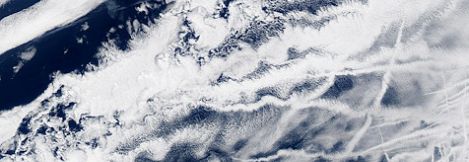Earth and Climate
Earth and Climate
Philip Stier, Head of Climate Physics, Atmospheric Physics, Clouds and Aerosols is also Academic Supervisor and Project Coordinator of iMIRACLI (Innovative Machine Learning to Constrain Aerosol-cloud Climate Impacts). He is collaborating with members of our unit in Computer Science and Statistics at Oxford university as well as other ELLIS members across the EU.
Duncan Watson-Parris, Postdoctoral Research Associate, University of Oxford and Course Director, iMIRACLI
The aim of iMIRACLI
Anthropogenic climate change is one of the most urgent problems facing mankind. To avoid dangerous levels of global warming, the UN Conference of Parties 2015 in Paris reached a historic agreement to keep global mean temperature rise “well below” 2°C above pre-industrial levels. Anthropogenic aerosols have most likely offset some of the greenhouse warming to date, particularly through their interaction with clouds, however, despite decades of intensive research, significant uncertainties in the magnitude of this cooling still persist.
Even though big datasets have been widely analysed to advance our understanding of aerosol-cloud climate interactions, many uncertainties remain and current methods are often inadequate, Artificial intelligence (AI) and machine learning, which are already revolutionising many areas of research, have not yet been fully applied in climate science – and scientists are not trained adequately. iMIRACLI proposes that merging of AI, machine learning and climate science will deliver a breakthrough in our understanding of the impact of aerosol-cloud interactions on climate.
Philip's research within the Department of Physics, University of Oxford:
Earth observation (EO) by airborne and satellite remote sensing and in situ observations plays a fundamental role in monitoring our planet. In the last decade, machine learning has attained outstanding results in the estimation of bio-geo-physical variables from the acquired images at local and global scales in a time-resolved manner. Gaussian processes (GPs), as flexible non-parametric models to find functional relationships, have excelled in EO problems in recent years, mainly introduced for model inversion and emulation of complex codes. GPs provide not only accurate estimates but also principled uncertainty estimates for the predictions. Besides, GPs can easily accommodate multimodal data coming from different sensors and from multitemporal acquisitions. Due to their solid Bayesian formalism, GPs can include prior physical knowledge about the problem, and allow for a formal treatment of uncertainty quantification and error propagation.
Climate Processes

Our research addresses physical climate processes in the context of anthropogenic perturbations to the earth system as the underlying cause of climate change.
Focal points of our research are cloud and aerosol physics, their interactions and their role in the climate system. Aerosols are small liquid or solid particles suspended in air of both anthropogenic and natural origin. Cloud droplets form on aerosol particles.

Figure: Biomass burning aerosols over the Amazon during the 2005 dry season with embedded cumulus clouds. (From NASA Goddard)
Atmospheric aerosols play an important role in the global climate system through direct modification of the global radiation budget, by scattering and absorption, as well as indirectly, by the modification of cloud properties.
We combine theory with advanced computer models of the atmosphere, with explicit representation of the governing microphysical aerosol and cloud process, in synergy with measurement data from satellites, aircrafts and ground based instruments to understand the complex interaction of aerosols and clouds with the aim to quantify the resulting climatic implications. Increasingly, we are also employing machine learning techniques to analyse and emulate complex big climate datasets.
Recent papers from Philip Stier and Duncan Watson-Parris:
- Model calibration using ESEm v1.1.0 - an open, scalable Earth system emulator
- ClimateBench: A benchmark dataset for data-driven climate projections



